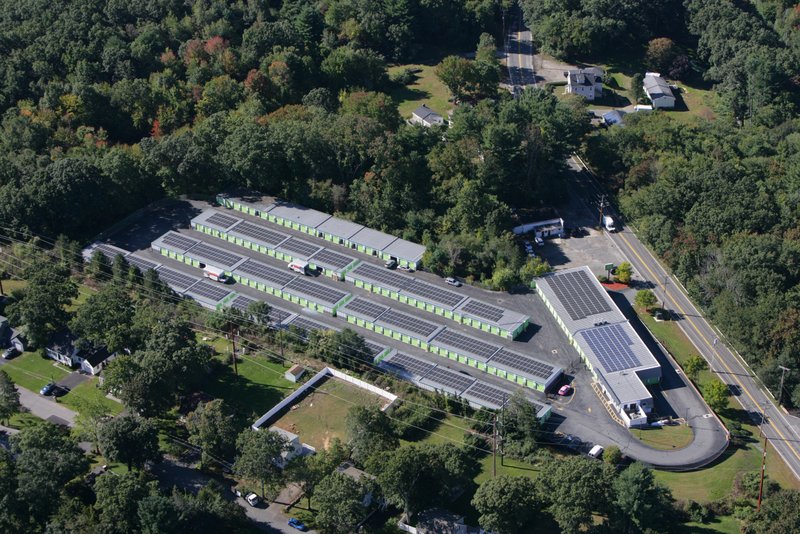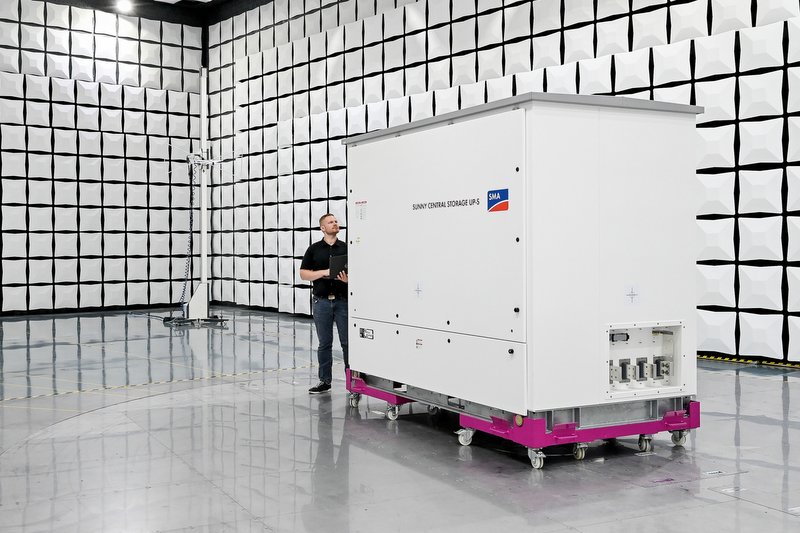The flexibility of SMA Sunny Highpower PEAK3 | The Pitch
From upfront design flexibility to long-term reliability, inverter selection can make or break a solar project’s economics. On The Pitch, we looked at SMA America’s Sunny Highpower PEAK3 – the German manufacturer’s high-density, 1500 V inverter that will soon be manufactured and skidded in the United States – with senior application engineer Hasan Taylor, and strategic markets manager Tyson Schoelzel.
Watch the whole 18-min episode above, or listen in the podcast player of your choice: Apple Podcast | Spotify | Amazon | Podbean.
Here’s a snapshot.
Pain points for developers and asset owners right now
Tyson Schoelzel: “I think a key phrase is “right now.” There are many. They shift over time, but there are some constant themes. I would boil them down to interconnection — that seems to be a chronic topic the whole industry is talking about across segments. How to achieve maximum kilowatt-hour yield to the grid — how to make money — and then from the long-term asset owner perspective, how can those systems be easily serviced and have the best uptime? We’re always hearing from customers about those three things.”
Hasan Taylor: “One of the main ways the PEAK3 can address those pain points is serviceability — O&M cost. With a centralized architecture, downtime is a huge concern. In the unlikely event that a PEAK3 fails, replacement is going to be a lot easier than having to wait for us to send out a field service technician to service the inverter. Maybe you have to wait for additional parts after that. A PEAK3 is going to be a much simpler process. If you connect your system to Sunny Portal, that also simplifies the O&M process because then we have visibility of what’s going on on the site. I think that’s one of the main ways the PEAK3 would address those pain points.”
The typical PEAK3 project is expanding
Taylor: “Typically we’re seeing the PEAK3 in the 5- to 20-megawatt scale, but because of the modularity of the design — especially if you’re seeing a skidded solution with the PEAK3 — you can really expand it as large as you want. We’ve had a system of 100 megawatts with PEAK3s. Depending on the power class you’re using — whether it’s the 125 or 150 — what we’re talking about is a virtual-central architecture. You’re getting similar or even more power density with a skidded solution using our PEAK3s than you would with, say, one Sunny Central inverter.”
Adjustable AC settings great for repowering
Schoelzel: “We enjoy having that wide range of offerings with our PEAK3-125. It was the first — and one of very few products in the market — at 1500 volts that outputs at 480 volts AC. Our PEAK3-150 outputs at 600 volts — that’s a much more common output voltage to use in a community solar scale site. And the FLEX inverter with the adjustable output is ideal for repowering. As our industry matures and we have a lot of older sites that will be prone to failures — whether it’s the PV modules or something else — when it’s the inverters, when you look at yesteryear there were a lot of inverters built at odd AC output voltages. What that means is you don’t have to tinker with a lot of your AC balance of system — notably the transformer. We can help people achieve a repower at a much lower cost and effort.”
Surviving the elements
Taylor: “The PEAK3 really shines in respect to it’s built for harsh environments. Our IGBTs are actually designed for well over 1500 volts. In reality, there’s a 60% design reserve that’s built into our PEAK3s so we’re not taxing them out at 100% all the time. Also, our OptiCool technology — which is basically our system of internal and external fans that are keeping components inside the inverter cool so they can operate longer and reduce derating.”
Schoelzel: “Everything Hasan just said enables the PEAK3 to perform not just over a 25-year design life, but at very high ambient temperatures and very high DC/AC ratios with that confidence that you’re going to get full nameplate output up to 52 °C — or about 125 °F ambient temperature — for that 25-year lifespan.”
Data Manager M, a no-brainer value
Taylor: “What I always tell customers installing our PEAK3: just get a Data Manager M. It’s not required, but we strongly recommend it, and it’s only going to save you time, money, and heartache in the future. Just get the Data Manager. Connect it to the internet. Sign up for Sunny Portal — Sunny Portal is free, by the way. Once you have a Data Manager connected to the internet, the monitoring portion of it is absolutely free. And what that does for you — not only does it give you remote visibility, it gives you an option to change parameters remotely if necessary. You can see everything that’s going on with the inverter in terms of spot values on the AC side and DC side of the inverter.”
Schoelzel: “And I would add that we have a feature called Smart Connected. When you register the inverters to our Sunny Portal, you can opt into a program where our service team is now able to take a more proactive stance and alert you to any error codes and suggested corrective measures to fix those. In a worst-case scenario, we’re also in a position to automate a ticketing process and actually release an RMA unit if that’s the case.
“A second thing that the Data Manager enables is a lot of advanced grid controls and support. A good example there is we’re seeing a lot of customers needing limited or zero export. The Data Manager is key to enabling those features and again it doesn’t cost much and it’s a great solution to a lot of things.”




